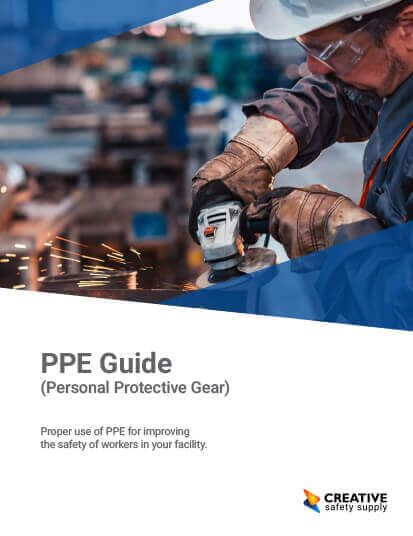
There are several different types of spill kits depending on the liquid that is spilled. To ensure safety and prevent injuries, it is crucial to have a spill kit that can handle the spill effectively. It is also advised to keep multiple kits on site due to the fact that spill kits are a one-time use.
At Creative Safety Supply, we offer the following types of spill kits:
- Universal Spill Kit: The most common type of spill kit, these kits come in different sizes including 5-gallon, 20-gallon, 30-gallon, 50-gallon, and 90-gallon options. The bigger the size, the bigger a spill it can handle. These kits contain sorbents, pads and pillows to be placed over the spill. Also, usually found in these kits is a variety of PPE like safety gloves, eye goggles, and a disposal bag.
- HazMat Emergency Spill Kit: This kit is used for spills of hazardous chemicals such as battery acid. It includes bio-hazard sorbents, neoprene gloves, sanitizing surface wipes, and sanitizing hand wipes.
- Personal Protection Spill Kit: This kit contains different items of personal protective equipment that will protect an employee in the case of a spill. It includes boots, coveralls, gloves, and goggles.
- Trucker Spill Kit: This spill kit comes in a flexible storage that will be easy to store and transport in a truck. Not necessarily designed for emergencies, these sorbents are ideal for handling fluids from a vehicle.
Most of the spill kits offered have the option to be customized, or we can create a custom spill kit that will fit the needs of any workplace. It will be important to complete a hazard assessment of the workplace to understand what liquids could be spilled. OSHA has set certain requirements for the contents of a spill kit, but adding additional items, like a laminated sheet with spill procedures on it, can be extremely effective.
Similar Questions
- What does a universal spill kit contain?
- What PPE is included in spill kits?
- What is in a biohazard spill kit?
- What are the benefits of having spill kits?
- What does spill clean-up entail?
- Where should spill kits be located?
- How many times can a spill kit be used?
- What does a spill kit usually always include?
- How do I choose the right spill kit for my facility?

